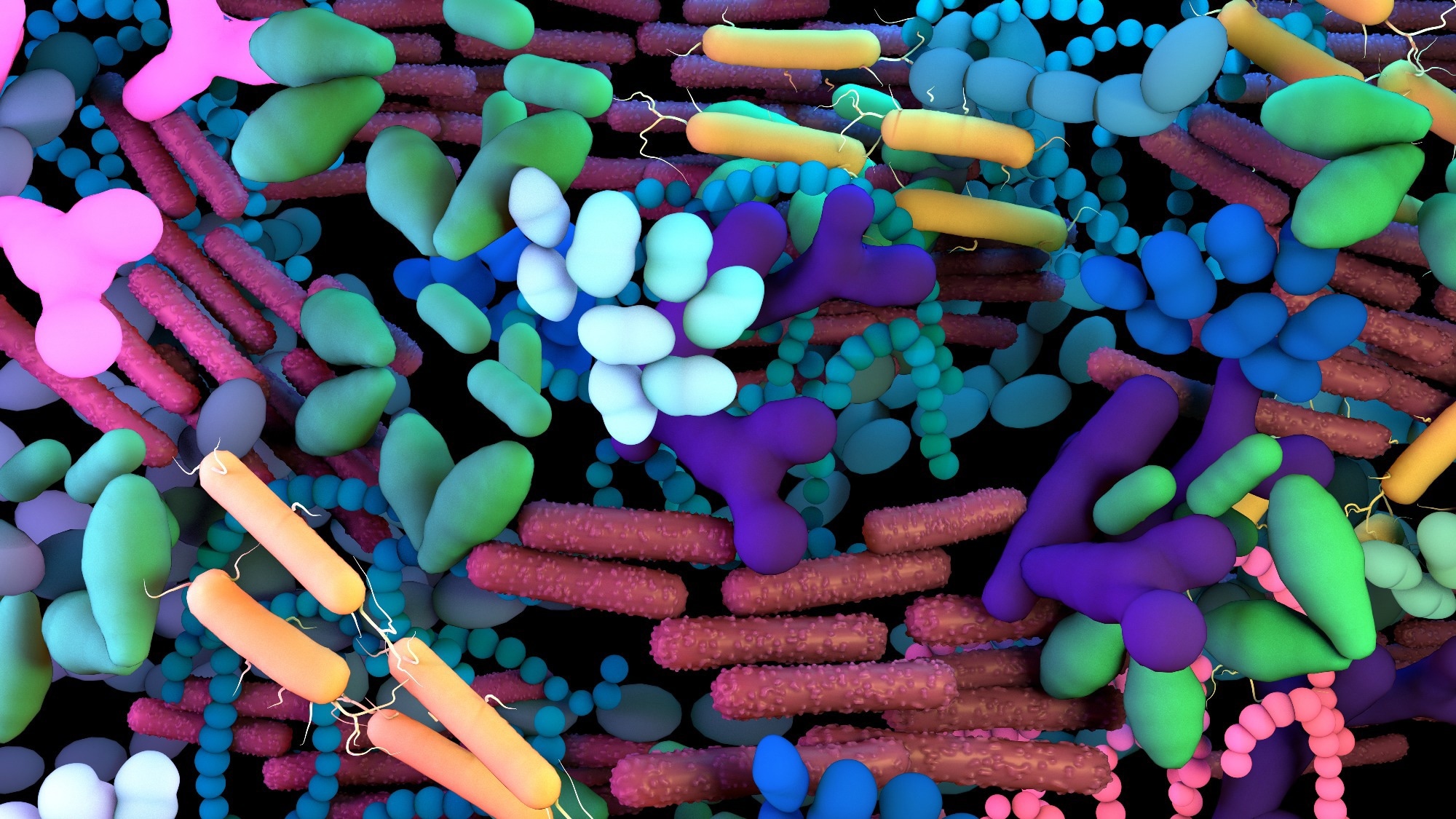In a recent study published in Cell, researchers used a multi-omics approach to profile the gut microbiomes and metabolomes of mothers and infants to determine the vertical and horizontal transmission of bacterial species and strains as well as individual genes and understand the dynamics of the gut microbiome assembly that shape the development of the infant before and after birth.
 Study: Mobile genetic elements from the maternal microbiome shape infant gut microbial assembly and metabolism. Image Credit: Design_Cells/Shutterstock
Study: Mobile genetic elements from the maternal microbiome shape infant gut microbial assembly and metabolism. Image Credit: Design_Cells/Shutterstock
Background
The vertical transmission of gut bacteria from mother to fetus during pregnancy and the horizontal transfer of microbes through breast milk plays a vital role in the physical and cognitive development of the infant long after birth. Studies have shown associations between the gut microbiota composition of breastmilk and the development of the infant’s immune system, as well as autoimmune conditions and allergies. Furthermore, allergies and autoimmune disorders have also been linked to exogenous proteins in infant formula.
Metabolites produced by gut microbiota are also associated with the infant’s cognitive development. However, the development of gut microbiomes and metabolomes in the perinatal stage and their role in infant development remains unclear.
About the study
In the present study, the researchers used longitudinally collected infant-serum samples and fecal samples from 137 mothers and 74 infants, including 70 pairs of mothers and infants. The samples were subjected to various analyses, including deep metagenomic sequencing, assays to measure the circulating cytokines, gut inflammation markers, and gut permeability, as well as untargeted profiling of fecal metabolites.
Changes in and associations between the metabolomic and metagenomic profiles of the mothers and infants over time were assessed. Two approaches were used to analyze the metabolomic data — reference standards were used to annotate peaks, and mass-to-charge ratios were mapped to the Human Metabolome Database to identify metabolomic features of unique compounds.
Additionally, single nucleotide polymorphism (SNP) haplotypes of dominant strains of bacterial species were analyzed to identify identical strains between mothers and infants. The events that included the appearance of these strains appearing in the infant’s gut microbiome were noted. Furthermore, the influence of the relative abundance of maternal gut microbe species on the gut microbiome structure of the infant was also analyzed to determine the maternal contribution to the assembly of the infant gut microbiome.
Contig pairs of mothers and infants that had shared gut microbe genes were aligned pairwise to confirm gene transfer between mothers and infants. Shared genes were mapped to databases such as uniprot, Kyoto Encyclopedia of Genes and Genomes, and evolutionary genealogy of genes: Non-supervised Orthologous Groups (eggNOG) to determine the involvement of genes with mobilome-related functions such as conjugation and transduction in horizontal gene transfer. The biological abundance and prevalence of microbial genes were calculated to further understand the relevance of interspecies gene transfer from the mother to the infant.
Metabolomic profiles of mothers and infants were compared, and infant-specific features in the metabolomic profiles were investigated to determine longitudinal patterns. Additionally, tandem mass spectrometry was used to determine the association between breastmilk and infant metabolome. The effects of diet on infants were investigated by comparing the metagenomic and metabolomic profiles and systemic and intestinal inflammation markers of infants that were breastfed with those of infants that were given hydrolyzed or regular formula.
Results
The results reported large-scale transfer, from the mother to the infant, of mobile-genetic elements usually associated with genes involved in diet-related adaptations. The diversity of the infant metabolomes was lower than that of the mothers, but infant metabolomes contained a large number of novel microbe-metabolite associations and unique metabolites that were not found in the metabolomes of the mothers. One such association that was unique to infant metabolomes was the inverse relationship between Bifidobacterium longum and inosine, which has immunomodulatory and neuroprotective properties.
Inflammation markers such as cytokine signatures, and the metabolome profiles of breastfed infants were significantly different compared to those of infants who were given the non-extensively hydrolyzed regular formula. Infants that were given breastmilk showed increased intestinal inflammation markers such as beta-defensin 2 and fetal calprotectin, which were inversely correlated to pro-inflammatory markers. Furthermore, microbes found in breastmilk were positively associated with eicosanoids and other intestinal inflammatory mediators in infants. Infants fed on breastmilk underwent early immune maturation, resulting in increased immune tolerance.
Metabolic profiles also revealed changes in fecal bile acids in pregnant women, which correlated with increased taurine conjugation. The gut microbiota showed an increase in Bilophila wadsworthia, a bacterial species that reduces sulfates and degrades taurine.
Conclusions
Overall, the results reported that maternal microbiota and dietary factors influence the co-development of the microbiome and metabolome of the infants and affect their neurodevelopment and immune maturation. Additionally, maternal influences on the gut microbiome and metabolic activities of the infants are also exercised through interspecies horizontal gene transfer from mother to infant. Furthermore, the identification of microbe-metabolite interactions unique to infants indicates that microbes play a significant role in early development, which needs to be explored further.
Journal reference:
- Vatanen, T., Jabbar, K. S., Ruohtula, T., Honkanen, J., Avila-Pacheco, J., Siljander, H., Stražar, M., Oikarinen, S., Hyöty, H., Ilonen, J., Mitchell, C. M., Yassour, M., Virtanen, S. M., Clish, C. B., Plichta, D. R., Vlamakis, H., Knip, M., & Xavier, R. J. (2022). Mobile genetic elements from the maternal microbiome shape infant gut microbial assembly and metabolism. Cell. doi: https://doi.org/10.1016/j.cell.2022.11.023 https://www.cell.com/cell/fulltext/S0092-8674(22)01467-2